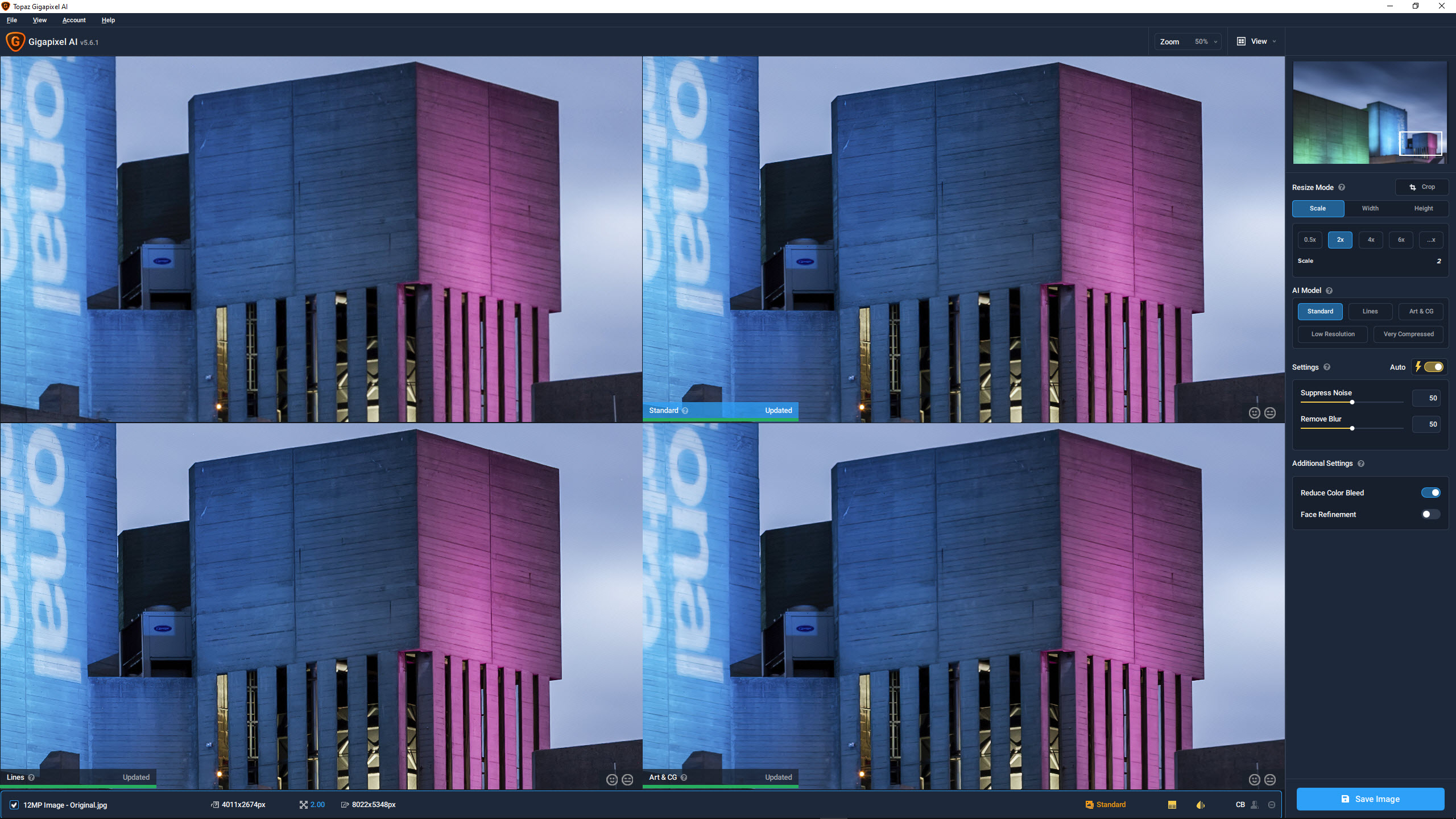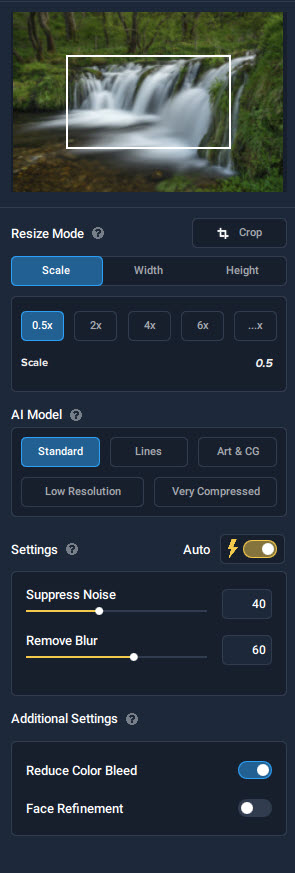Digital Camera World Verdict
Topaz Labs Gigapixel AI is a specialized tool. Image interpolation is a simple technique that can be applied effectively using standard image editors, so having dedicated software for the job may be unnecessary for many. Results from Gigapixel AI are generally nice and sharp, but there’s often a waxy look in details that you can also get with luminance noise reduction, so the final result will be a matter of personal taste rather than simply saying Photoshop, for instance, is better than Gigapixel AI or vice-versa. As such, this makes a dedicated program such as Gigapixel AI a significant investment despite its relatively low cost of $99.99 / £73.
Pros
- +
Quick and easy to use
- +
Results are most often sharp
- +
Manual and auto control available
Cons
- -
Detail can sometimes look waxy
- -
More expensive than other Topaz software
- -
Interpolation included in most editing software
Why you can trust Digital Camera World
Enlarging images, known as interpolation, is a simple technique typically used for making images larger for print, or for increasing the size of heavily cropped low-resolution shots. This makes it ideal for photographers who wish to increase the size of images taken with older cameras, and those using current cameras with lower resolutions such as Micro-Four-Thirds and entry-level mirrorless and DSLR models.
Topaz Labs Gigapixel AI is an entire software program dedicated to image enlargement which utilises the power of artificial intelligence and deep learning to enlarge photos and graphics by up to 600 percent or higher. With both auto and manual control over settings and five AI Models for different types of images, the software makes resizing images incredibly simple for both beginners and more experienced photographers.
Gigapixel AI is available standalone for $99.99 / £73 or as part of the ‘Image Quality Bundle’ for $199 / £144, which includes Sharpen AI, DeNoise AI and Gigapixel AI and offers a reasonable saving compared to when purchased individually. Although this does depend entirely on whether or not you need all three software options. The software is available for both Mac and Windows-based PCs.
Key features
Advertised as being able to enlarge images by up to 600 per cent, although you can go further than this by manually setting the scale increase beyond those available as presets, Gigapixel AI uses artificial intelligence and deep learning with the aim of achieving the best results possible when enlarging images. There are five AI modes suited to different types of images that are designed to apply the most appropriate settings to images being processed by the software.
The key feature of the software is the ease of use and the ability to increase image size while maintaining, in most but not all cases, sharpness and detail. Enlargement can be applied using Scale with presets for 0.5x, 2x, 4x and 6x, as well as the ability to increase size based on the width or height of the image where you can dial in a final output size in pixels. All common file types can also be enlarged using the software, including raw files which can then be saved as DNGs.
Interface and usability
As a standalone software program that does one job, the Gigapixel AI user interface is simply and intuitively presented so you cannot go wrong. Even absolute editing beginners could easily enlarge images using the presets and auto settings to achieve a good result, while more advanced users can take a more manual, yet still AI-powered approach.
With a Zoom control to zoom in and out of images, an Original button for quickly seeing the before image and a View control below the main menu, selecting the optimal image magnification and view option is incredibly simple. The View also allows for various image views including Single View, Split View, Side-by-Side View and a Comparison View, which shows the original image alongside three of the AI Model results to assist in selecting the most effective Model for the image. The main control panel is situated on the right of the interface and is extremely simple to follow with clear sections.
The best camera deals, reviews, product advice, and unmissable photography news, direct to your inbox!
Results
Image quality in shots enlarged using Gigapixel AI varies depending on the type of image being processed. A low-resolution image of 1000px on the long side was enlarged in Gigapixel AI and also using Preserve Details 2.0 in Photoshop to compare the differences. The enlargement factor was set to 600% in both cases, which is extreme for such a low-res image, but in this case the result from Photoshop was sharper with more detail present despite details taking on a waxy appearance when zoomed in.
When working with a 12MP architecture photo, the image was enlarged by a factor of 200% and 600% to assess any differences between these amounts and the capabilities of Photoshop and Gigapixel AI. The results from Gigapixel AI used the Lines AI Model which is designed for such images and was much sharper overall because sharpening is factored into the enlargement, although the Photoshop enlargement could have been sharpened separately to match.
The Gigapixel AI enlargements did, however, have waxy details in both results, whereas the Photoshop enlargement was arguably more natural-looking. Neither result was necessarily better than the other, so which option you prefer will be a matter of personal preference but natural is arguably better in the majority of cases.
Verdict
Image interpolation is a simple technique that can be applied effectively using standard image editors such as Photoshop, Affinity Photo and even a feature called Super Resolution in Adobe Camera Raw for increasing the size of Raw files. Results from Gigapixel AI are generally nice and sharp, but there’s often a waxy look in details that you can get with luminance noise reduction, so the final result will be a matter of personal taste rather than simply saying Photoshop is better than Gigapixel AI or vice-versa. As such, this makes a dedicated program such as Gigapixel AI a significant investment despite its cost of $99.99 / £73.
Read more:
• Best photo editing software
• Best photo printers
• Best photo editing laptops
• Best monitors for photographers
James Abbott is a landscape and portrait photographer based in Cambridge. He’s also an experienced photography journalist specializing in camera skills and Photoshop techniques. He is also a CAA-approved drone pilot and professional aerial photographer.








